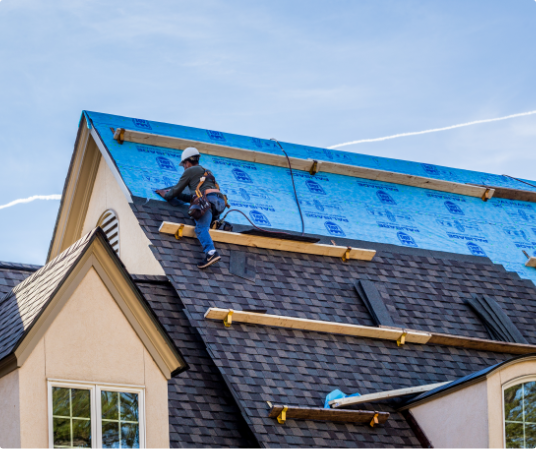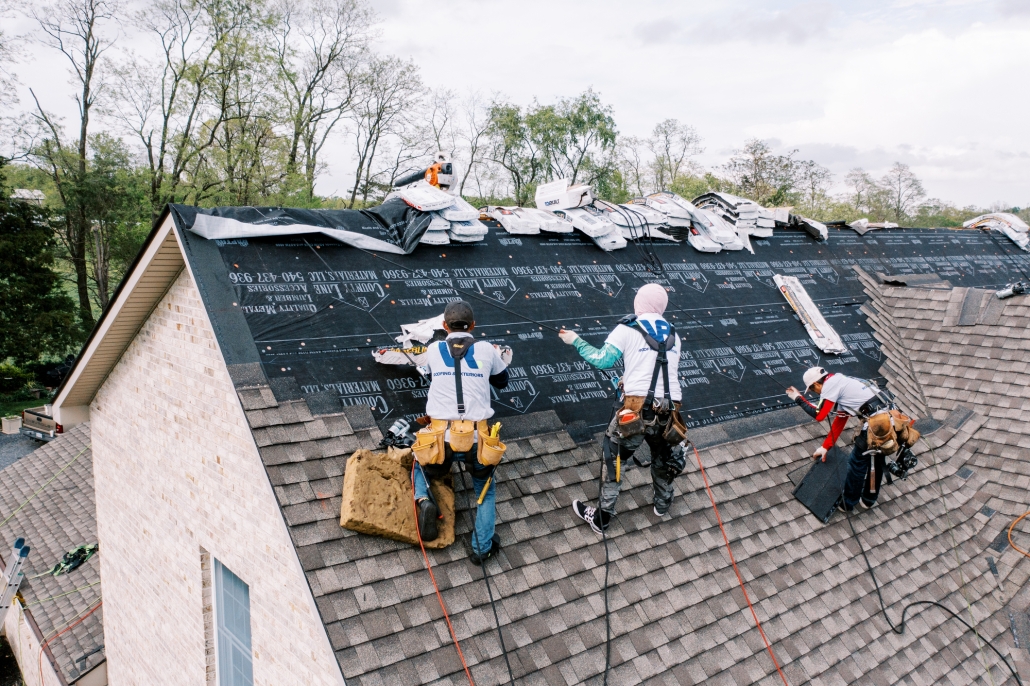Evaluating the Providers Used by Roofing Companies in Gainesville Florida
Evaluating the Providers Used by Roofing Companies in Gainesville Florida
Blog Article
Best Practices for Ensuring Correct Roofing Ventilation
A well balanced intake and exhaust vent ratio, generally 1:300, plays an essential role, with intake vents ideally placed at the lower side of the roofing for cool air entry and exhaust vents at the optimal for warm air leave. Keeping insulation away from vents is vital to prevent airflow constraint.
Understand Air Flow Basics
Properly understanding ventilation fundamentals is crucial for making sure the long life and efficiency of roofing systems. Reliable air flow alleviates wetness buildup and temperature level extremes in the attic, both of which can lead to considerable architectural damage in time. A well-ventilated roofing aids in preventing usual problems such as mold and mildew growth, wood rot, and ice dams, which can endanger the honesty of the roofing products and the underlying structures.
The key goal of air flow is to assist in the activity of air, permitting a consistent exchange in between the interior and exterior settings. This equilibrium is accomplished through a combination of consumption and exhaust vents that function with each other to maintain optimum air flow. Consumption vents, generally located along the eaves or soffits, enable fresh air to enter the attic room, while exhaust vents, typically situated at or near the roofing system ridge, allow hot, damp air to get away.
Key aspects influencing the efficiency of roofing system air flow consist of proper placement, sufficient sizing, and guaranteeing that both intake and exhaust vents are unobstructed. Normal assessment and maintenance are crucial to recognize prospective clogs, damage, or ineffectiveness in the air flow system, consequently protecting the roofing system's efficiency and longevity.
Kinds Of Roofing Vents
Roofing vents play a vital role in maintaining reliable attic air flow and, by expansion, the general health and wellness of the roof covering system. Different kinds of roof vents are offered, each with one-of-a-kind benefits customized to specific roof requirements.

Soffit vents are installed under the eaves and operate in tandem with roofing system vents to make sure a balanced intake and exhaust system. By enabling cooler air to go into from below, soffit vents promote the expulsion of warm air with top vents. Gable vents, located on the outside walls of the attic room, deal another efficient service, particularly in homes with gable roofs.
Evaluate Your Current Ventilation

Next, think about the age and problem of your roofing products and air flow elements. Older systems might not abide by existing building regulations or might have degraded with time, minimizing their performance. Conduct a detailed assessment to recognize any kind of signs of deterioration, such as corrosion, damage, or voids that can endanger the system's efficiency.
In addition, measure the attic temperature level and humidity degrees. High temperature levels and moisture can indicate inadequate ventilation.
Setup Best Practices
Reliable installation of roofing ventilation systems is critical for making sure ideal efficiency and longevity. Appropriate installation starts with understanding the certain ventilation demands of the structure and the roof it covers. This entails determining the proper proportion of consumption to exhaust vents, commonly sticking to the 1:300 guideline, which stipulates one square foot of ventilation for every single 300 square feet of attic room flooring room.

Consumption vents need to be mounted at the roof's lower side, often in the soffits, to permit cool air to go into. Exhaust vents, on the other hand, should be installed near or at the roof covering's height to facilitate the departure of cozy, damp air.
Seal all air vent connections diligently to avoid air leaks and potential water seepage. Use top quality materials and adhere to producer standards to guarantee toughness and efficiency. In addition, incorporating ridge vents with baffles can significantly improve airflow effectiveness by protecting against wind-driven rainfall and snow from entering the attic.
Ultimately, specific installment of roof ventilation systems minimizes prospective problems such as mold growth, ice dams, and structural damage, making certain the roof's honesty and the building's general health and wellness.
Routine Upkeep Tips
Uniformity in upkeep techniques is fundamental to ensuring the long-term efficiency of roofing ventilation systems. Throughout these examinations, make sure that vents are totally free of debris, nests, and various other obstructions that could hinder airflow.
Cleaning the vents is one more vital job. Use a soft brush or a vacuum cleaner to remove dust and particles from intake and exhaust vents. Be cautious not to harm the air vent screens or louvers during the procedure. Additionally, inspect the attic area for any type of indicators of water damages, which could compromise the stability of the roofing system.
Correct insulation additional hints is similarly important. Make certain that attic insulation does not block the vents, as this can drastically restrict airflow. Reposition or change it to keep an effective obstacle. if any type of insulation has actually shifted or worked out.
Last but not least, change any damaged or missing components quickly. Busted vents, cracked roof shingles, or worn-out blinking can all add to inadequate ventilation and must be resolved immediately. Regular maintenance ensures that the roofing air flow system works ideally, thus prolonging the lifespan of the roofing itself.
Conclusion
Making sure appropriate roofing ventilation is critical for keeping the effectiveness and sturdiness of a roof system. Adherence to the 1:300 intake and exhaust air vent proportion, coupled with the critical placement of vents, is vital.
A well balanced intake and exhaust air vent proportion, frequently 1:300, plays a pivotal function, with intake vents ideally positioned at the reduced edge of the roofing system for great air access and exhaust vents at the more info here optimal for cozy air departure. Intake vents, typically located along the eaves or soffits, permit fresh air to go into the attic space, while exhaust vents, commonly situated at or near the roofing system ridge, enable warm, damp air click to read more to get away.
Soffit vents are installed under the eaves and work in tandem with roofing vents to make certain a balanced intake and exhaust system. By enabling cooler air to go into from below, soffit vents facilitate the expulsion of warm air through upper vents. Adherence to the 1:300 intake and exhaust vent proportion, combined with the calculated placement of vents, is important.
Report this page